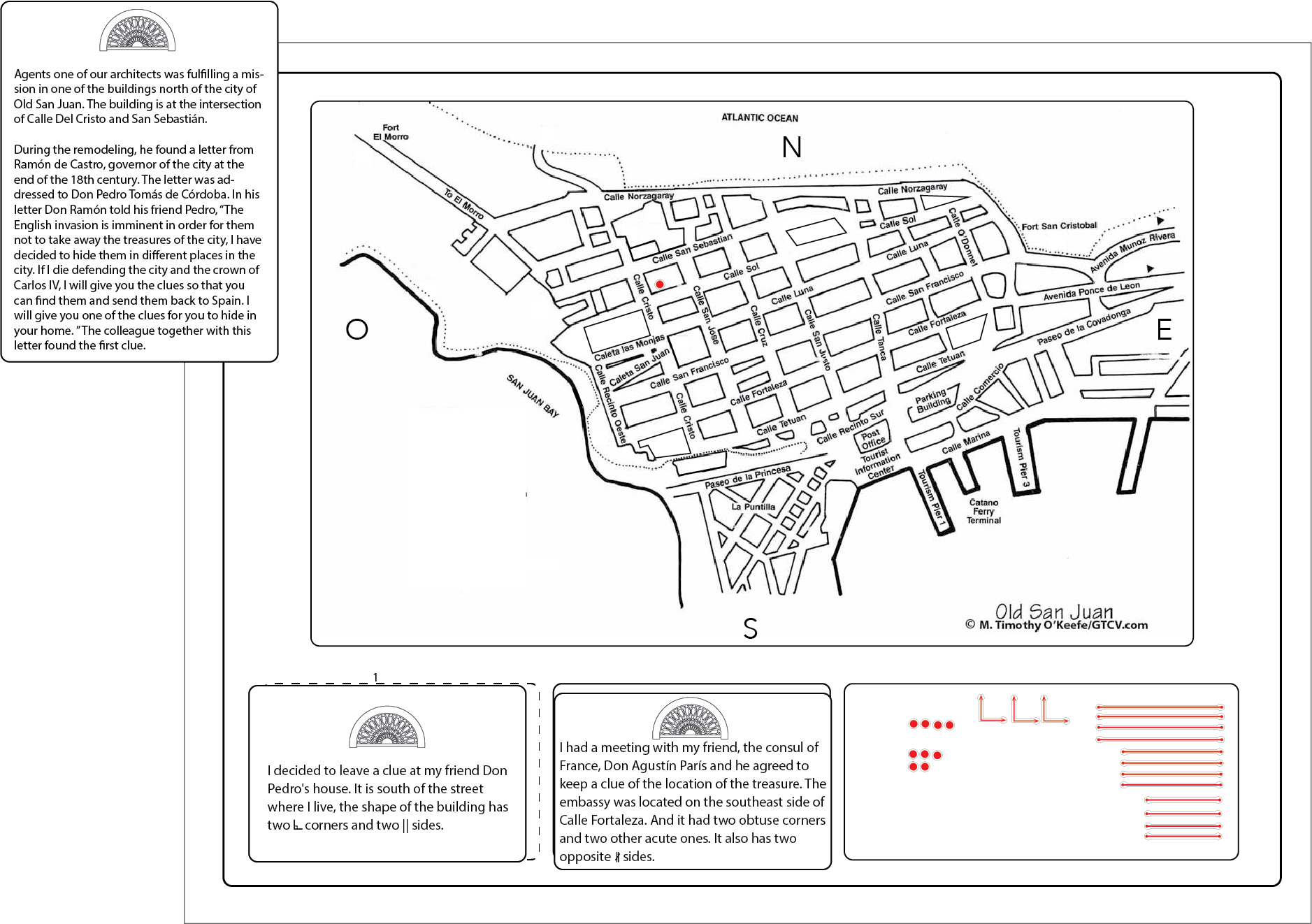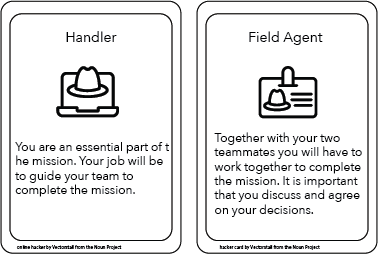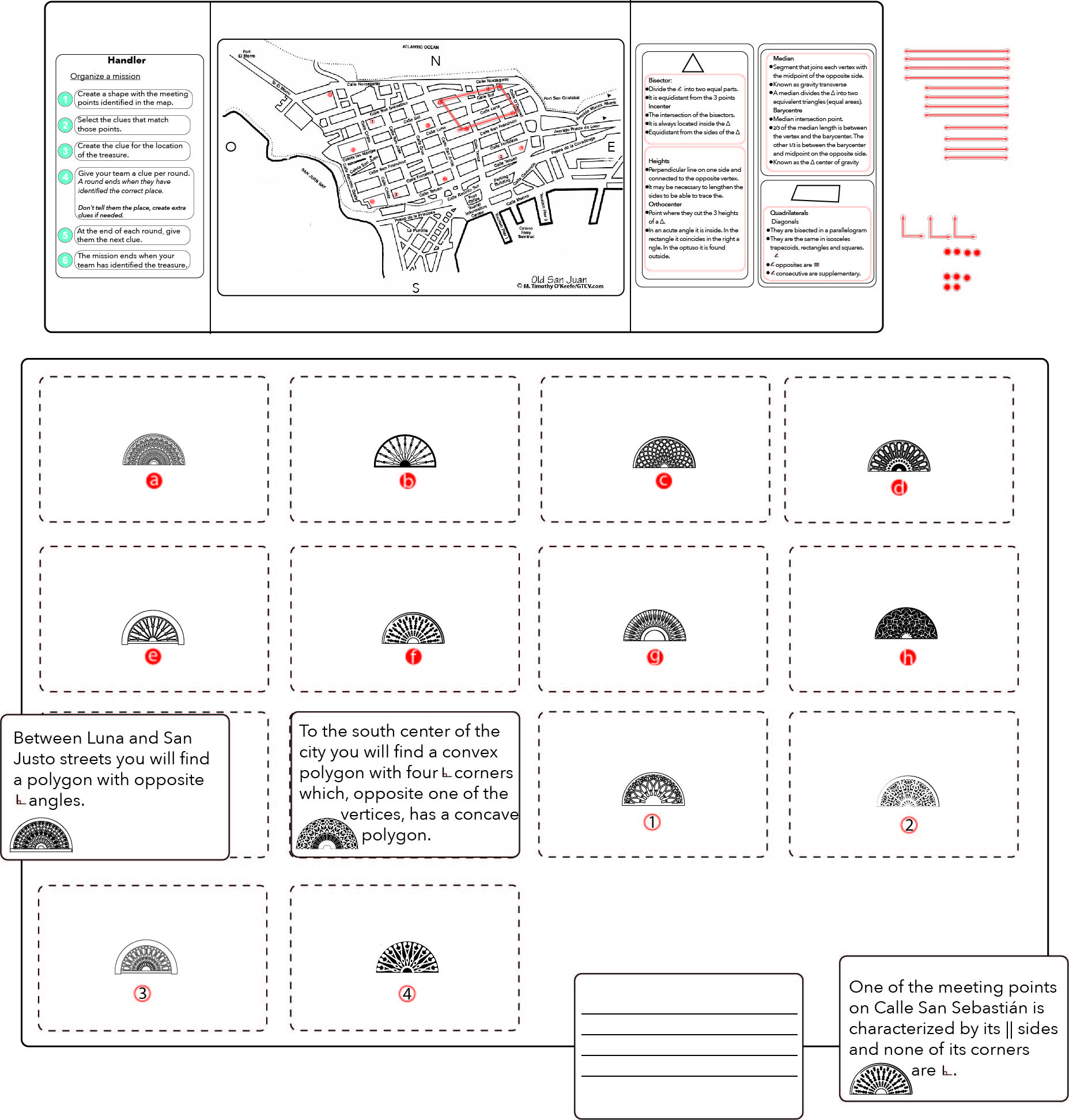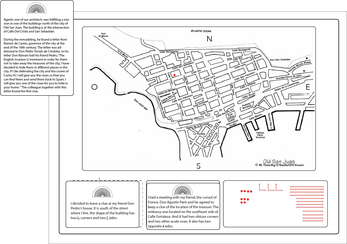
Mission: CityProof
A downloadable game
Mission: CityProof
What is Mission: CityProof?
Mission: CityProof is a board game that permits players to develop their inductive and deductive reasoning. Design for four players, they will become active members of the Agency for the Preparation of Inductive and Deductive Principles (APIDP). The APIDP goal is to familiarize agents with inductive and deductive reasoning. Further, to help agents develop basic deductive principals. Like build their conjectures, organize their thoughts and make connections, and justify and support their thinking.
More about the design and how to play the game
The team will work together to find different treasures around the city. Set in the city of Old San Juan, the team will have to solve a series of clues. These build on the previous clues will lead the team to interact with its map to locate the points, shapes, and, ultimately, the treasure.
First-time players will have to complete an initial mission. During this first mission, all four players will receive the clues, and their goal is to locate the first treasure. Part of this mission is based on historical events and people. Each clue will help them identify and construct on the map. The map will be on the mainboard.
Additionally, they will use a series of shapes: points, segments, and angles. Also, they will have available the following tools: ruler, bevel, and protractor. Together the agents will debate and conclude wherein the map is the clue. They are working collaboratively to recuperate the different treasures of the city.

After completing this initial mission, each member of the team will randomly select a role card. There are two different roles: handler and field agent. The field agent, the role of 3 players, will continue working as they did in the previous mission. The handler will be in charge of organizing and directing the agents in the next missions.

The handler’s goal will construct a polygon and write clues to help find the treasure. To do so, this player will have a different board. It consists of the map with the highlighted points, a guide of the responsibilities of the role, and geometry knowledge to help the player build the final clue. They will also have available the shapes manipulative to help with the creation of the players and will have another board and set of cards to the different points on the map. In addition to blank cards to write the additional cards. Having this role helps with replayability and harder level difficulty. This role will enable the player to have a more in-depth analysis and required to build conjectures.

Why this game?
As a formal math teacher and discussing with fellow educators, we have observed the lack of preparation students have when presented with formal proofs (Boyle et al., 2015). When presented with this new dimension of mathematics, many students' reaction is to feel overwhelming (Becker, 2019). Furthermore, many have observed that students' perspective of proof is as an outcome, textbook-based, or nonexisting. Also, this type of reasoning is associated with high school Geometry, but according to the NCTM's process standards (2000), it should be used in all grades and across content standards.
Who should play it?
Given this need, there is a space to design a game that permits students to explore the foundations of this reasoning. Mainly, by allowing students to get familiarized with this form of mathematical thinking before experiencing a formal activity. As mentioned before, students should develop through all grades in efforts to introduce the foundations of this formal thinking; the audience of the game are middle school students.
Where should it be played?
Also, because of the limited exposure and opportunity for this type of reasoning in the classroom, the game will be designed to be used in this space to develop the social environment needed to help advance these skills. This decision was based on recommendations done by scholars to promote social interactions and use logic games in the classroom in efforts to students develop mathematical arguments (McFeetors & Mason, 2009).
What where the challenges and success?
During the design of the game, there where many challenges and successes. The most challenging part was translating the initial idea to actually creating the problems in the game, particularly creating clues that could build over the one before and still make sense. Furthermore, creating clues that had a clear challenge and where not to math based. Also, a crucial challenge was incorporating classroom culture and the affordances of games, maps, and topics into the game. Success was the identification of the need and the initial idea. Overall there is still a need for more iterations.
All the files are available in English and Spanish. Please feel free to download the files. If you use it or modify it, please share.
More updates will come soon
| Status | Prototype |
| Category | Physical game |
| Author | mml2222 |
| Tags | Board Game, Math, spanish |

Leave a comment
Log in with itch.io to leave a comment.